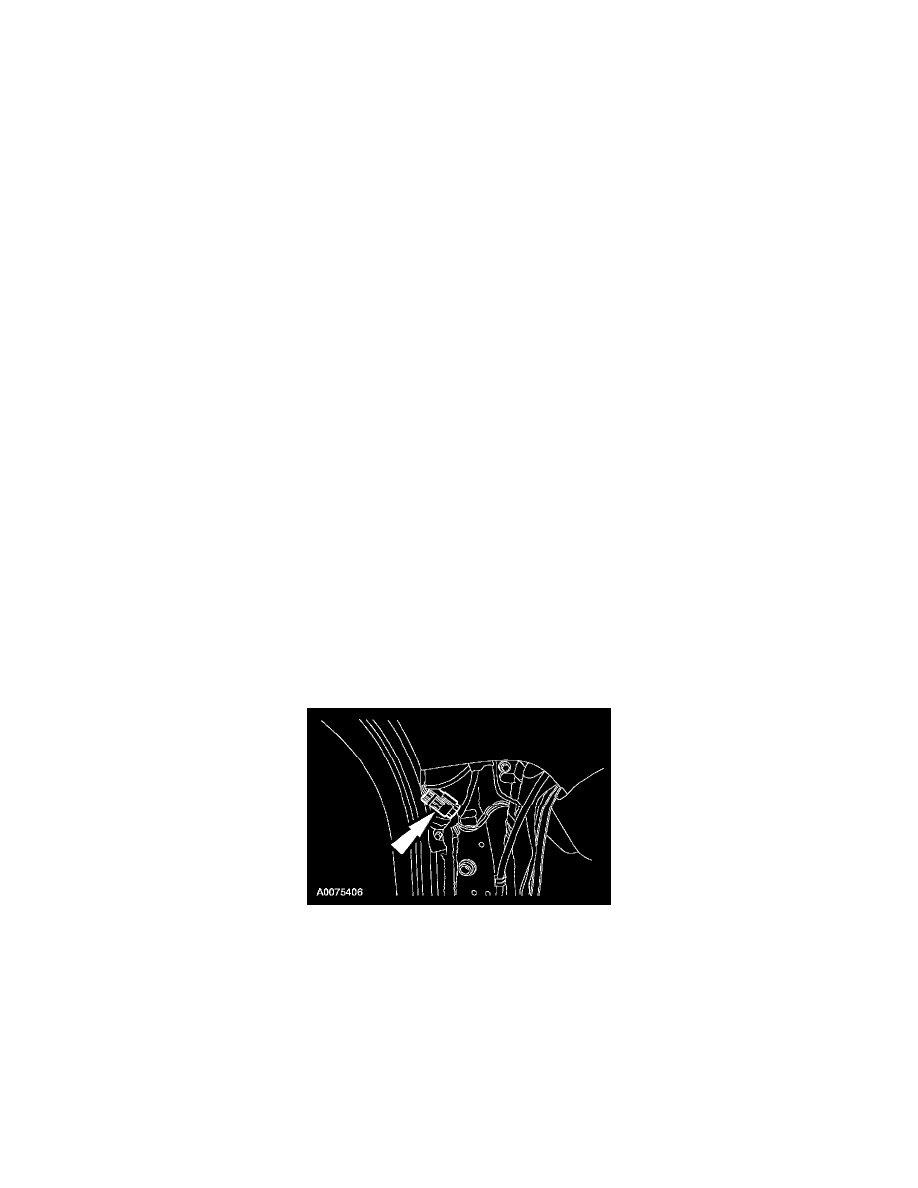Freestar V6-4.2L VIN 2 (2004)

connected and the ignition switch is ON. Failure to follow these instructions may result in the inadvertent deployment of the safety canopy and risk
of personal injury.
-
Never probe the connectors on the air bag module. Doing so can result in air bag deployment, which can result in personal injury.
-
The safety belt pretensioner is a pyrotechnic device. Always wear safety glasses when repairing an air bag equipped vehicle and when handling a
safety belt buckle pretensioner or safety belt retractor pretensioner. Never probe a pretensioner electrical connector. Doing so could result in
pretensioner or air bag deployment and could result in personal injury.
-
Never probe the connectors on a safety canopy module. Doing so can result in safety canopy module deployment.
NOTE:
-
Diagnostics or repairs are not to be carried out on a seat equipped with a seat side air bag with the seat in the vehicle. Prior to attempting to
diagnose or repair a seat concern when equipped with a seat side air bag, the seat must be removed from the vehicle and the restraint system
diagnostic tools must be installed in the seat side air bag electrical connectors. The restraint system diagnostic tools must be removed prior to
operating the vehicle over the road.
-
After diagnosing or repairing an SRS, the restraint system diagnostic tools must be removed before operating the vehicle over the road.
-
After diagnosing or repairing a seat system, the restraint system diagnostic tools must be removed before operating the vehicle over the road.
-
The SRS must be fully operational and free of faults before releasing the vehicle to the customer.
1. WARNING: To avoid accidental deployment and possible personal injury, the RCM backup power supply must be depleted before
repairing or replacing any front or side air bag (SRS) components and before servicing, replacing, adjusting or striking components near
the front or side air bag sensors or RCM, such as doors, instrument panel, console, door latches, strikers, seats and hood latches.
The front impact severity sensor is located under the hood latch bracket.
The first row side impact sensors (if equipped) are located under the seat, beneath the carpet.
The second row side impact sensors (if equipped) are located at or near the base of the C-pillar.
To deplete the backup power supply energy, disconnect the battery ground cable and wait at least one minute. Be sure to disconnect
auxiliary batteries and power supplies (if equipped).
Disconnect the battery ground cable and wait at least one minute.
2. Open the steering wheel access door. Through the steering wheel access door opening, release the tab and disconnect the driver air bag module
electrical connector.
3. Attach restraint system diagnostic tool 418-F403 to the clockspring side of the driver air bag module electrical connector.
4. Lower the glove compartment to access the passenger air bag module electrical connector.
5. Through the glove compartment opening, disconnect the passenger air bag module electrical connector.
6. Attach restraint system diagnostic tool 418-F403 to the vehicle harness side of the passenger air bag module electrical connector.
7. Remove the RH D-pillar trim panel.
8. Disconnect the passenger side safety canopy module electrical connector.
